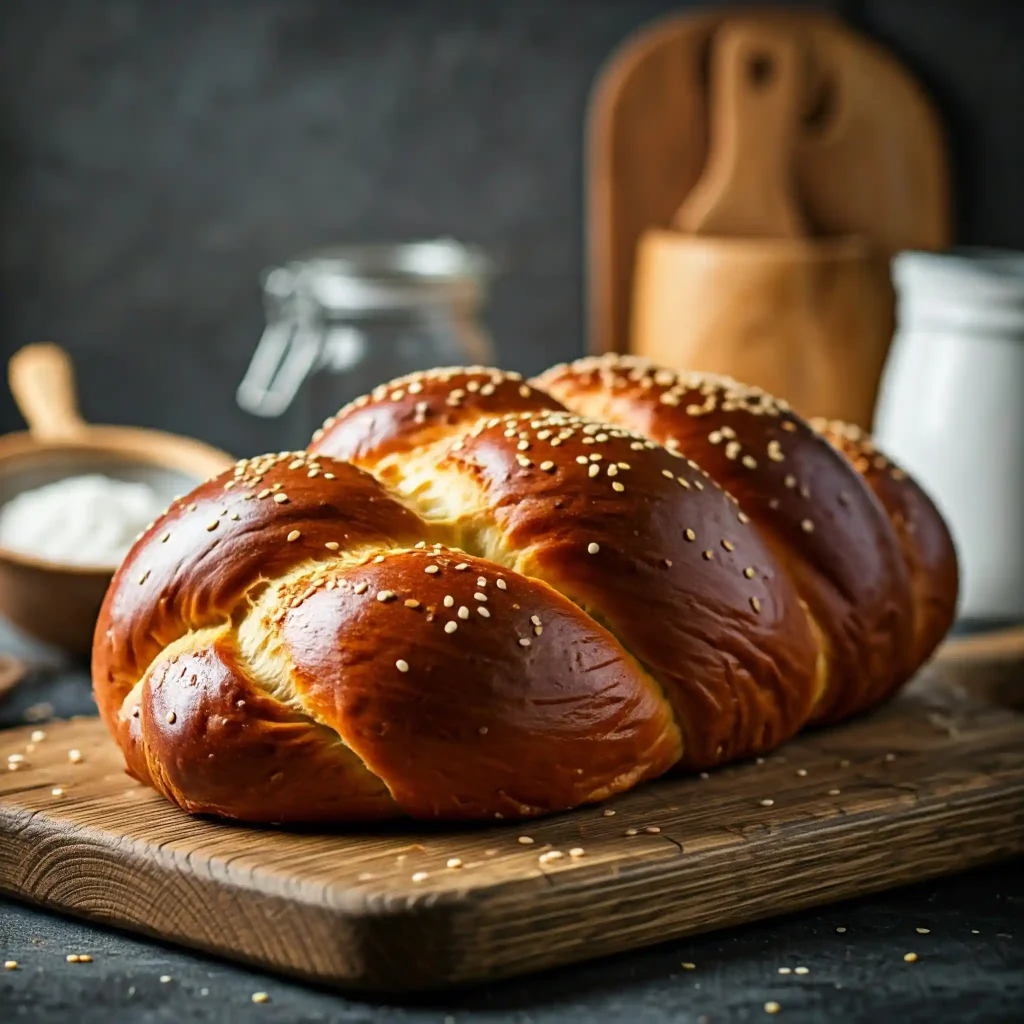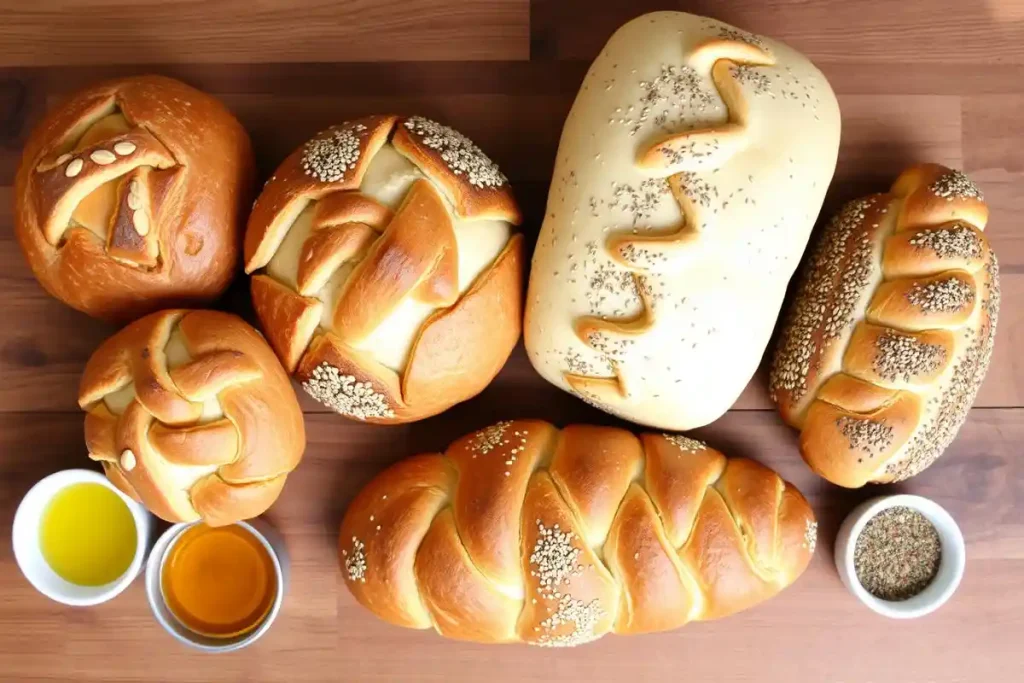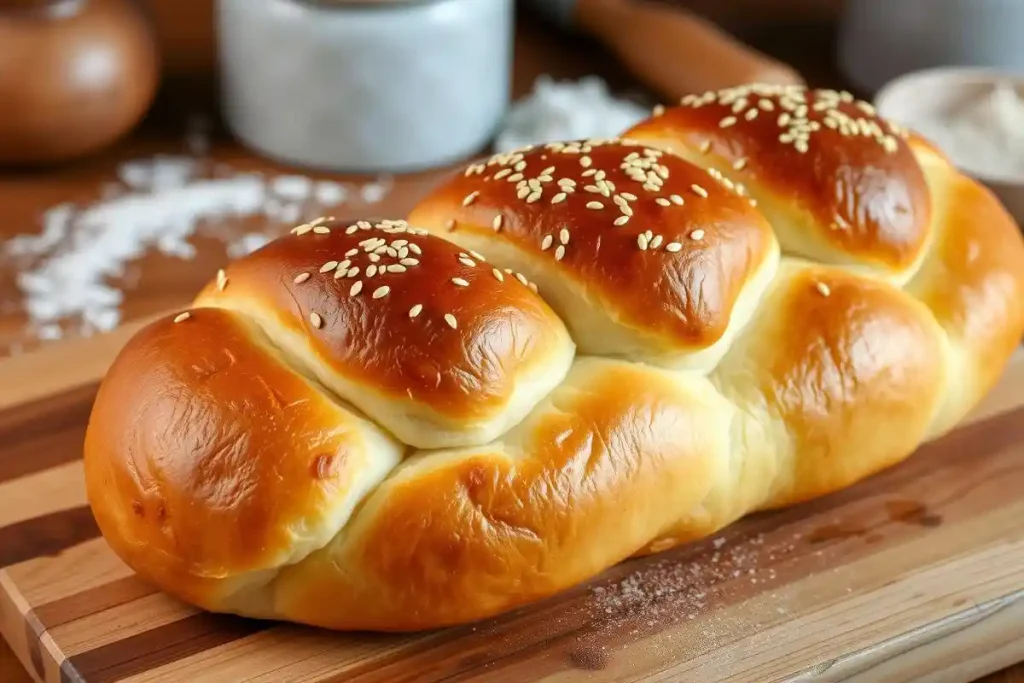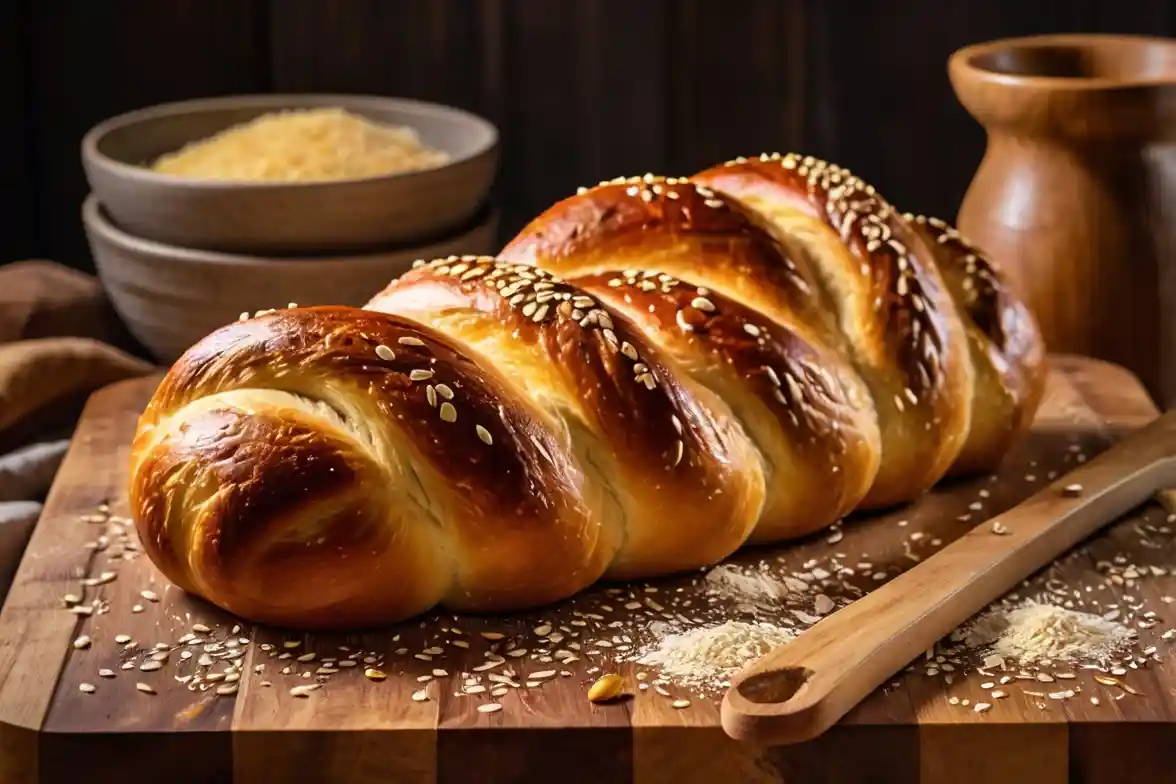Challah, a beautifully braided bread, carries both spiritual significance and cultural diversity within the Jewish community worldwide. This beloved bread plays a central role in Jewish customs and varies by region. Throughout this post, we’ll explore how to make traditional challah bread and dive into the unique characteristics of different regional challahs, from Ashkenazi to Tunisian styles. Whether you are baking for Shabbat or simply love bread, this guide will walk you through making an authentic, soft challah that is rich in both taste and history.
Table of Contents:
- Ingredients Needed for Authentic Challah
- Step-by-Step Recipe for Traditional Jewish Challah Bread
- Regional Variations of Challah Bread
- Tips for Perfecting Challah Texture and Shape
- Additional Recipes for Bread Lovers
- Conclusion
1. Ingredients Needed for Authentic Challah
Essential Ingredients:
- 4 cups all-purpose flour
- 2 ¼ teaspoons active dry yeast
- 1 cup warm water
- ¼ cup granulated sugar
- 2 large eggs, plus 1 for egg wash
- ¼ cup vegetable oil
- 1 teaspoon salt
Optional Ingredients for flavor variations:
- Honey, sesame or poppy seeds for garnish
- Additions like raisins or za’atar (optional, depending on regional style)
2. Step-by-Step Recipe for Traditional Jewish Challah Bread
Step 1: Activate the Yeast Combine warm water and yeast, stirring in a teaspoon of sugar. Let sit for 5-10 minutes until it turns frothy. This is the first step in making any traditional challah bread and ensures a good rise.
Step 2: Prepare the Dough In a large bowl, mix the flour, sugar, and salt. In a separate bowl, whisk together the eggs and vegetable oil, then add this mixture to the dry ingredients. Pour in the yeast mixture, stirring to combine.
Step 3: Knead and Let Rise Transfer the dough to a lightly floured surface and knead for 8-10 minutes. The dough should be smooth and elastic. Place it in a lightly oiled bowl, cover it, and let it rise for 1-2 hours, or until it has doubled in size.
Step 4: Braid the Challah Divide the dough into three or six equal portions. Roll each portion into a long rope and braid as desired. Braiding varies across styles; for instance, some regional recipes use a round braid for holiday traditions.
Step 5: Second Rise Place the braided loaf on a baking sheet lined with parchment paper. Cover and let it rise for another 30-60 minutes.
Step 6: Egg Wash and Bake Preheat the oven to 350°F (175°C). Brush the loaf with beaten egg for a golden crust and sprinkle with sesame or poppy seeds, if desired. Bake for 25-30 minutes, or until the crust is golden brown.

3. Regional Variations of Challah Bread
Ashkenazi Challah
Ashkenazi challah is what many in North America think of when they hear “traditional challah bread.” This bread is typically braided, light, and slightly sweetened. Ashkenazi Jews from Central and Eastern Europe bake this challah with a soft, enriched dough, often topped with poppy or sesame seeds.
Sephardic Challah
Sephardic challah is often sweeter than its Ashkenazi counterpart. It is typically flavored with spices like cinnamon and may contain raisins or other dried fruits. Common among Mediterranean Jews, this bread is sometimes shaped in a round rather than a braided loaf, symbolizing the cycle of the year. It is a wonderfully aromatic version that reflects Sephardic Jews’ heritage of blending local spices into their cuisine.
South American Challah
South American challah combines local ingredients, offering a unique twist on traditional challah bread. In Argentina and other countries with large Jewish populations, challah might incorporate slightly different flour types, such as whole wheat or a mix of grains. A focus on softer, sweeter bread mirrors the influence of European traditions brought by Jewish immigrants.
Mizrahi Challah
Mizrahi challah from Middle Eastern Jewish communities is denser, with a rich aroma from spices like cardamom and cumin. It’s is often infused with sesame seeds and za’atar and can include toppings of black or white sesame seeds. The Middle Eastern influence is clear in these variations, as they tend to be bold, slightly savory, and unique.
Tunisian Challah
Distinctly different, Tunisian challah, known locally as bkhobz mbesses, incorporates additional olive oil, creating a denser, moist bread. This version may also have sesame or nigella seeds, giving it a subtle nutty flavor. Shaped in long, flattened loaves rather than braids, it aligns closely with other North African bread styles.
You can find on this link the Calories in Chellah Bread.

4. Tips for Perfecting Challah Texture and Shape
Tip 1: Hydration Balance
Ensure your dough has the right hydration level to keep it soft and easy to braid. Higher hydration doughs create a softer loaf with an airy crumb.
Tip 2: Proper Kneading
Whether by hand or mixer, knead your dough until it’s elastic and passes the “windowpane test.” Kneading ensures gluten development, which gives challah its structure.
Tip 3: Adding Flavor Variations
For a more adventurous twist, add cinnamon, raisins, or za’atar to your challah. These additions are commonly found in Sephardic and Mizrahi recipes.
Tip 4: Egg Wash Application
For a shiny, golden crust, generously brush your challah with an egg wash before baking. This step is critical for the iconic challah look.
Tip 5: Braid Practice
Take time to practice braiding techniques. If you’re new to braiding, start with a simple three-strand braid before trying the more complex six-strand or round braids.
5. Additional Recipes for Bread Lovers
Looking to try your hand at more unique breads? Here are some recipes to expand your baking skills:

6. Conclusion
Exploring the different styles of traditional challah bread provides a glimpse into the culinary history and culture of Jewish communities around the world. With this recipe, you’ll have a delicious, soft challah loaf perfect for any occasion, be it a holiday or a family meal. By following the step-by-step guide, you’ll create a bread rich in history, culture, and flavor that captures the heart of Jewish traditions.

